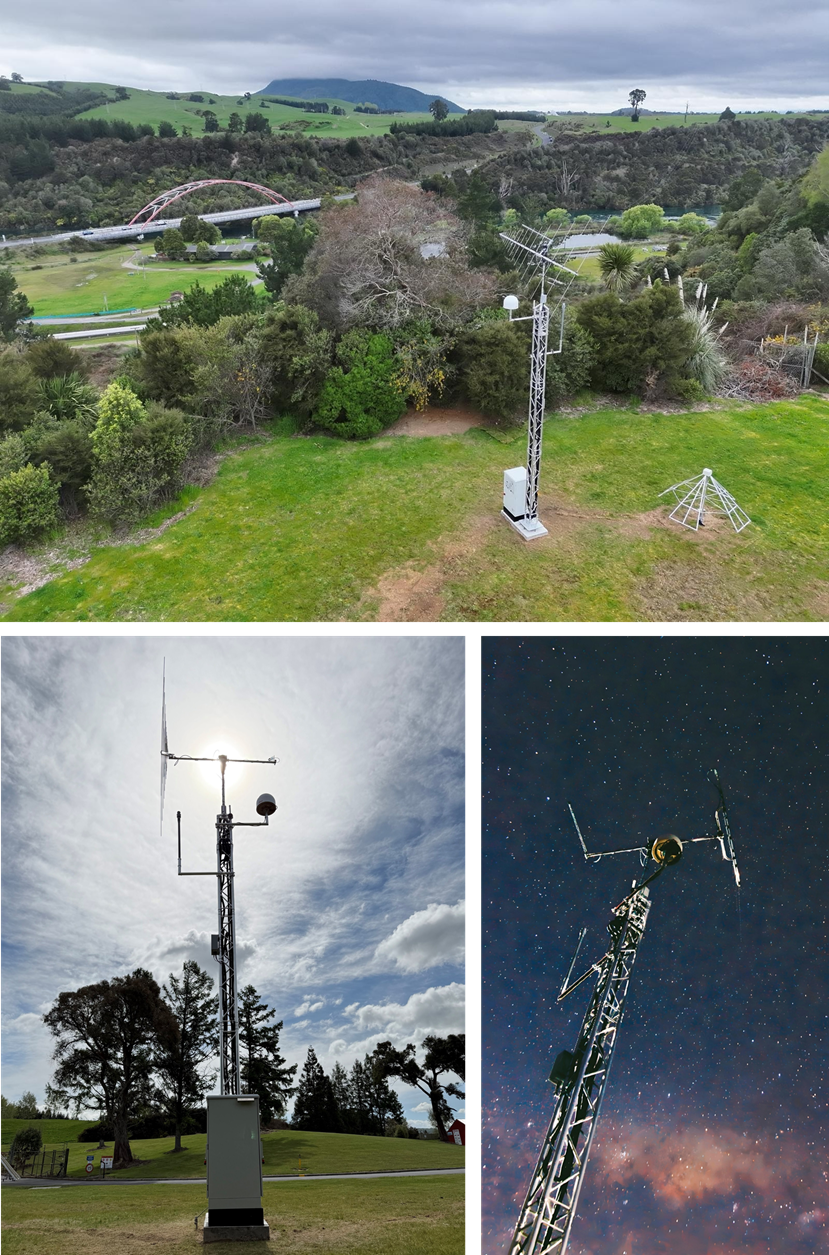This combined ground-based observatory is equipped with:
- CALLISTO solar spectrometers observing solar radio bursts covering the frequency ranges: 10–80 MHz, 45–860 MHz, and 1000–1600 MHz
- GIFDS VLF receiver observing solar flares
- High-rate GNSS receiver observing ionospheric scintillations
Together with the SIGN station at DLR Neustrelitz, Germany, the Wairakei installation enables almost 24/7 continuous solar observations. Besides the direct impact of solar radio bursts on technological systems such as HF radio communications and GNSS navigation, solar flares in the X-ray and EUV ranges induce ionospheric disturbances, causing further disruptions, even affecting satellite orbits due to heating of the upper atmosphere. These space weather effects pose risks to critical sectors including aviation, maritime and satellite operations.
By combining radio spectrometers, VLF monitoring, and high-rate GNSS data, the SIGN provides a comprehensive view of solar activity and ionospheric impact, supporting research into space weather and enabling timely alerts to protect technological systems.
This deployment would not have been possible without the support and hospitality of Earth Sciences NZ — our great thanks to them.

